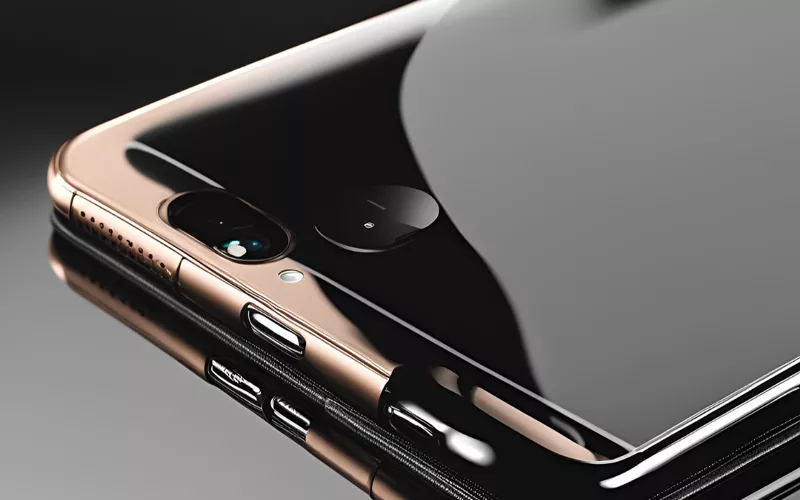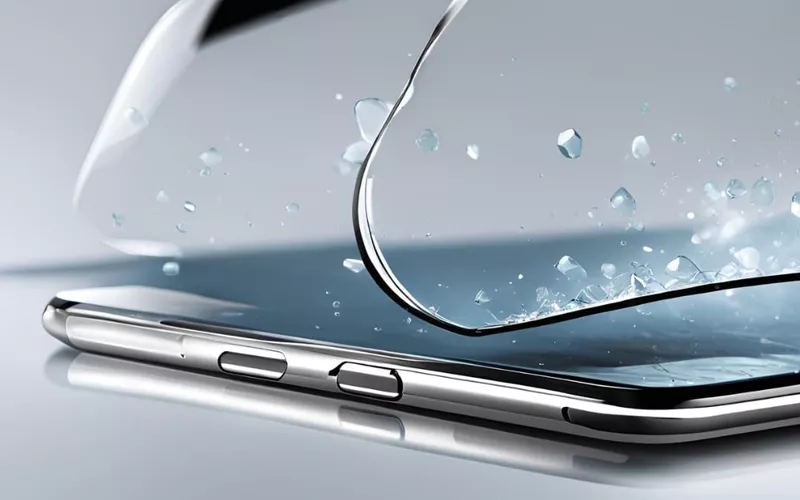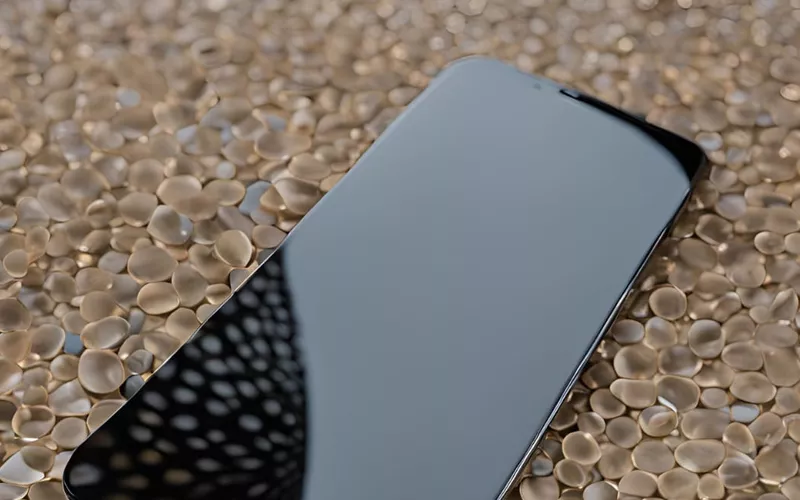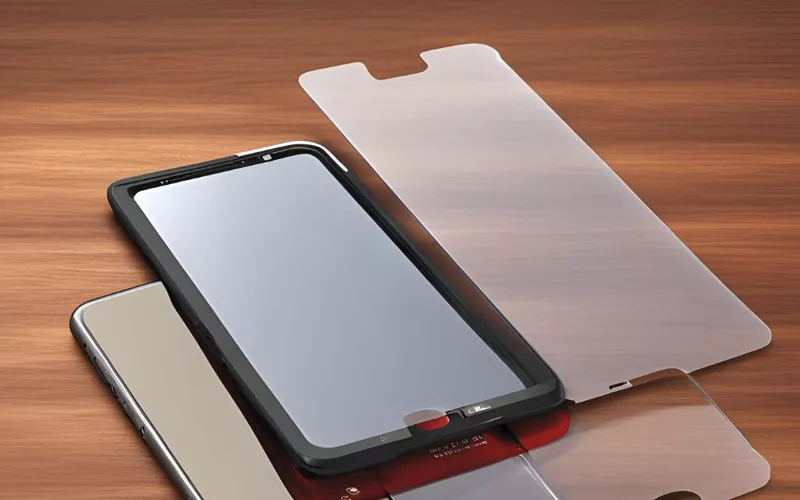Introduction
Don’t you love your smartphone? Everyone does. To keep them safe, you must have an excellent screen protector. You may be thinking now, I use my phone with care. But, my buddy, mishaps do happen.

Advanced Ceramics for Superior Smartphone Protection
Protecting your smartphone display is important in today’s digital age. Interestingly, advanced ceramics are a more recent development. They are far more successful at protecting your phone than traditional tempered glass.
These unique materials are quite hard and can withstand scratches and shocks, including large falls. They protect our phones by making them extremely durable against the impact of all these dangerous conditions.
The Role of Cover Glass in Smartphones
You know what? Smartphone cover glass is used on the outer layer of your phone. Their main purpose is to protect the display screen or rear panel. Cover glass is necessary not only to protect cell phones but also to make them portable, comfortable, and eye-catching.
Your phone touches many surfaces and items daily, like coins, keys, and even the corners of tables and floors. Then, an advanced ceramics screen protector acts as a shield between these abrasive materials and your phone screen. It absorbs scratches and keeps the screen safe.
So, let’s check the top 3 types of glass cover materials for your smartphones:

Aluminosilicate Glass – The Industry Standard
Now, let’s talk about aluminosilicate glass. This is made up of a substance called aluminum silicate, as the name shows. This glass is particularly resistant to high temperatures and chemical agents.
You’ve probably heard about Gorilla Glass being a form of aluminosilicate. It is simply a brand name. Corning makes this unique glass, which is thin but durable. They use an ion exchange method to make it strong.
Properties of Aluminosilicate Glass
Want to know more? Some properties of the Aluminosilicate glass screen protector are here:
-
Resistance to Scratch and High Tensile Strength: Due to their resistance to scratches, which are found on mobile devices, aluminosilicate is widely used in glass screen manufacturing.
-
Resistance to High Temperature: With an annealing temperature of up to 800°C, aluminosilicate provides glass with a high level of thermal resistance. It’s near the same temperature as ceramics.
-
Resistance to chemical degradation: Aluminosilicate is highly chemically resilient, having a decomposition rate of 10-4 g/(m2·day).
Yet, in comparison to advanced ceramics, aluminosilicate glass has limits, particularly in terms of impact resistance and general longevity. Advanced ceramics, because of their extreme hardness, provide greater protection.
Production of Aluminosilicate Glass
Ion exchange is the process used to produce Gorilla Glass. The glass is immersed in molten potassium salt at 400 degrees Celsius. In this way, potassium transfers sodium atoms out of the molecule.

Tempered Glass – A Popular Alternative
Interestingly, a tempered glass screen protector is to be chosen over a regular plastic protector. Since the former comprises a hard and sturdy material that is capable of withstanding scratches, cracks, and even minor falls. However, this does not always result in the durability as the advanced ceramic materials offer.
Properties of Tempered Glass
So, the following are the best properties of a tempered glass screen protector:
-
Enhanced durability: Tempered glass is produced by using heat and chemicals on ordinary glass. It strengthens it and increases its resistance to cracking and scratching.
-
Better clarity: The tempered glass keeps the quality of your smartphone’s screen, helping you enjoy brilliant colors and sharp images without deformation.
-
Smudge and fingerprint resistance: Tempered glass protectors contain a unique coating that hinders smudges and fingerprints. It keeps your smartphone’s screen clean and transparent.
Unlike liquid glass, tempered glass protectors have a 9H hardness and are much more durable. It is resistant to scratches from sharp objects like knives and most small drops and falls. The drawback, though, is that it can break when damaged by massive loads, such as a large drop.
Production of Tempered Glass
Now, let’s move on to the process of tempered glass. It can be produced from annealed glass through the thermal tempering method. The glass was set on a roller table and passed through a furnace. The furnace heated it above its initial temperature of 564 °C (1,047 °F) to 620 °C (1,148 °F).
After that, forced air drafts quickly cool the glass, leaving the inside free for movement for a brief time.

Ceramic Glass – The Advanced Material
Let me just say that here’s the best part! Inorganic ceramic films are also referred to as hard screen protectors. They are among the best types of screen protectors available on the market. It is becoming popular because it has high performance compared to older technologies such as tempered glass.
Low weight, improved strength, and better thermal and chemical stability are other advantages of advanced ceramics. That’s why it gives peace of mind to customers.
It consists of titanium, zirconia, and alumina ceramics. Advanced ceramics normally can withstand from 1000 °C to 1600 °C (1800 F to 3000 F) temperature ranges. Therefore, it is ideal for covering the screen of a mobile phone and is durable.
Properties of Ceramic Glass
Don’t overlook their properties. Ceramic glass screen protectors are well-liked because of their high scratch-resistance and protective properties.
-
Scratch Resistance: A super scratch-proof ceramic screen protector helps your mobile’s screen not crack even if you accidentally drop it.
-
Oleophobic Coating: Most ceramic protectors use an oleophobic layer that makes the glass interface even better. It provides a better seal against water and oil, hence improving the soft-touch and easy-to-clean layer.
-
High Transparency: They maintain the original clarity of the display screen as compared to traditional protectors, providing a clear and colorful representation.
-
Thin Profile: Although ceramic protectors are tough, they are usually very slim, thus maintaining the aesthetic look.

Good screen protector brands:
So how do you choose the right protector? The best 4 screen protector brands that people trust worldwide are:
Casper Pro Tempered Glass Screen Protector
Casper Screen Protector features are:
-
It is widely known for its high durability.
-
It is made by using high-quality materials.
-
It provides superior clarity.
-
It is made especially to provide a crystal-clear viewing experience.
-
It is simple to use, and its design is compatible with most mobile phone cases.
-
It comes with added protection so that you will find your screen free from fingerprints and other dirt.
ZAGG InvisibleShield Screen Protectors
ZAGG’s InvisibleShield features are:
-
It is popular because of its outstanding durability and clarity.
-
It uses advanced materials to give maximum protection without sacrificing touch sensitivity or screen quality.
-
It is well-known for its easy use and amazing performance
-
It provides a limited lifetime warranty on many of its products so that you order their products with confidence.
Belkin Screen Protectors
Belkin is another trusted brand with the following features:
-
It provides different types and sizes of screen protectors that are good for many smartphone models.
-
It is made with high-quality materials such as tempered glass and anti-scratch coatings.
-
It is well-known for its tight tolerance, optical clarity, and installation convenience.
-
It comes with a cleaning kit and installation tools.
Spigen Screen Protectors
Spigen features are here:
-
It has clear cases and is long-lasting.
-
It offers many protectors with different features to suit user needs.
-
It has budget-friendly pricing without sacrificing quality.
-
It gives authentic protection against scratches and drops.
Why Choose GORGEOUS for Aluminosilicate and Advanced Ceramic Materials in Smartphone Glass?
Smartphone material’s protection and high-quality standards require exact specifications to succeed. That’s where GORGEOUS comes in.
-
The three advanced ceramic factories of GORGEOUS occupy 30,000 square meters of production area in China.
-
Our manufacturing process, combined with finishing procedures, produces materials that fulfill the specific requirements of the electronics and mobile component industries.
For smartphone screen glass, GORGEOUS produces:
-
The aluminosilicate glass material offers manufacturers a transparent material that demonstrates both heat tolerance and impact strength properties.
-
Advanced ceramic materials such as zirconia and silicon nitride. The material functions as an ideal solution when manufacturers need slim screen protectors with resistance to scratches and heat exposure.
What makes GORGEOUS different?
-
The plants contain a total of 56 CNC machines with 21 high-temperature furnaces that ensure quality consistency.
-
The process of automated quality control helps our team maintain strict performance requirements for strength, along with durability and finishing quality across every batch.
-
Our customization process enables customers to choose desired dimensions for ceramic glass together with other product specifications depending on their needs.
The GORGEOUS brand offers a reliable supply of high-performance materials suitable for electronics manufacturing and phone accessory businesses, as well as mobile protection applications.
The company delivers all required advanced materials from Alumina to Zirconia with high precision and speed. This aligns well with contemporary smartphone manufacturing requirements.
Conclusion
There you have it! Although materials such as tempered glass have always been in use as a protective layer. Advanced ceramics are a step up in smartphone screen protection. Thus, you will never regret buying a ceramic screen protector. It offers protection and ease of use without those unnecessary concerns about your smartphone.
Contact us today!